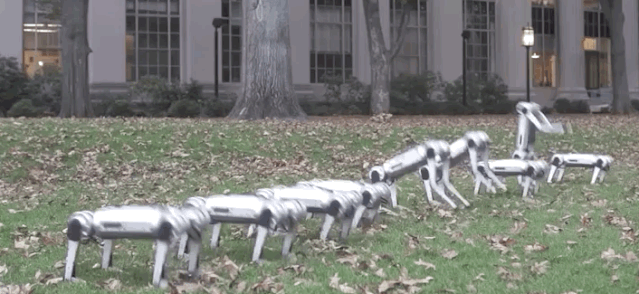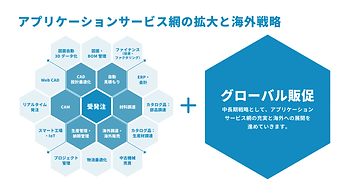
.jpeg)
.jpeg)

Global/China/Japan/Uk/Us
HOCIT GROUP
Eye-catching AI company・AI venture IT master HOCIT GROUP
Message from industry leader
Global/China/Japan/Uk/Us
HOCIT GROUP
Eye-catching AI company・AI venture IT master HOCIT GROUP
Message from industry leader
Global/China/Japan/Uk/Us
HOCIT GROUP
Eye-catching AI company・AI venture IT master HOCIT GROUP
Message from industry leader

Global/China/Japan/Uk/Us/Canada
HOCIT GROUP
HOCIntelligentTechnology
哈牛桥智能科技集团
HOCインテリジェントテクノロジー(株)
Japan-China Trade & Promotion Artificial Intelligence Deep Learning Association
Eye-catching AI company・AI venture IT master HOCIT GROUP
Message from industry leader.High-tech enterprise




.jpeg)




DX:Digital Transformation
AI IOT 5G Cloud
.jpeg)




Harvard University, Oxford University
Cambridge University
, MIT University




















HOCIntelligentTechnology
哈牛桥智能科技集团
HOCインテリジェントテクノロジー(株)
普通法人协会日中贸易促进人工智能深度学习协会
一般社団法人日中貿易振興人工知能ディープラーニング協会
Japan-China Trade & Promotion Artificial Intelligence Deep Learning Association
Eye-catching AI company・AI venture IT master HOCIT GROUP
Message from industry leader .High-tech enterprise
STOP COVID-19 × AI, IoT, Internet of Things, RPA, OCR-AI, ERP, cloud, bigdata, blockchain, ICT, 5G, 3D, AR, VR, iCLIP, core industrial software, smart chips, smart driving, core algorithms, neutrinos, quantum Top cutting-edge Technology Pioneering the future in an environment where the latest technologies and products are involvedEducation/Medical/Healthcare/Finance/Sports/Security/autonomous/Robot/IOT/ICT/Smart Manufacturing/Smart Transportation/Smart City/Smart Home/Smart Logistics/AI Real Estate/AI Marketing/AI Advertising/AI Agriculture and other fields





Top 10 scientists worldwide in ours Team
Among them, the familiar statistical machine learning man Michael I. Jordan ranked 4th, and the deep learning gods and the 2018 Turing Award winners Geoffrey Hinton and Yoshua Bengio ranked 9th and 10th respectively.
In addition, there are two Chinese scholars among the top 10 computer scientists, namely Jiawei Han, professor of computer science at the University of Illinois at Urbana-Champaign, and Philip S. Yu, professor of information technology at the University of Illinois at Chicago.

.jpeg)





.jpeg)







.jpeg)



























.jpg)
.jpg)

.jpg)









































.jpeg)



.jpeg)



The new coronavirus infectious disease "COVID-19" that is raging all over the world. Not only is it a health hazard to humans, but it is also seriously damaging society and the economy as a whole. What should the world economy aim to revive from here?
In this special issue, we interviewed leading industry representatives in each industry and explored the impact of the coronavirus on the industry, structural reforms to be made, and the path to hope ahead of corona. ..




.jpeg)






.jpg)












.jpg)







.jpeg)









Leading company's digital transformation 【DX Business Consultant Service Consultant Industry Leader
[IT engineer] Inexperienced OK! There is customer resident, system development for contract projects 100%, in-house development
In-house product development industry leader
.jpeg)






_%E3%83%9A%E3%83%BC%E3%82%B8_1.jpg)













.jpeg)










HOCIT GROUP
HOCIntelligentTechnology
哈牛桥智能科技集团
HOCインテリジェントテクノロジー(株)
普通法人协会日中贸易促进人工智能深度学习协会
一般社団法人日中貿易振興人工知能ディープラーニング協会
Japan-China Trade & Promotion Artificial Intelligence Deep Learning Association
Eye-catching AI company・AI venture IT master HOCIT GROUP
Message from industry leader
STOP COVID-19 × AI, IoT, Internet of Things, RPA, OCR-AI, ERP, cloud, bigdata, blockchain, ICT, 5G, 3D, AR, VR, iCLIP, core industrial software, smart chips, smart driving, core algorithms, neutrinos, quantum Top cutting-edge Technology. Pioneering the future in an environment where the latest technologies and products are involvedEducation/Medical/Healthcare/Finance/Sports/Security/autonomous/Robot/IOT/ICT/Smart Manufacturing/Smart Transportation/Smart City/Smart Home/Smart Logistics/AI Real Estate/AI Marketing/AI Advertising/AI Agriculture and other fields



.jpeg)





















.jpg)










































.jpeg)





.jpeg)
The consciousness of Harvard University, Oxford University, Cambridge University is the leading research and academic field of Harvard University, Oxford University, Cambridge University. The research and development team has more than 380 people. ERP consulting, artificial intelligence computer vision, natural language processing technology, data mining advanced data analysis , Cross-media analysis and reasoning technology, intelligent adaptive learning technology, swarm intelligence technology, autonomous unmanned technology, smart chip technology, brain-computer interface technology and other high-tech cutting-edge technologies in security, finance, retail, transportation, education, medical care, manufacturing, health Leading technology

.jpg)









DX:Digital Transformation
AI IOT 5G Cloud









Our mission is to increase
the GDP of the internet
Stripe is a technology company that builds economic infrastructure for the internet. Businesses of every size—from new startups to public companies—use our software to accept payments and manage their businesses online.
Our mission is to increase
the GDP of the internet
Stripe is a technology company that builds economic infrastructure for the internet. Businesses of every size—from new startups to public companies—use our software to accept payments and manage their businesses online.
Stripe is a technology company that builds economic infrastructure for the internet. Businesses of every size—from new startups to public companies—use our software to accept payments and manage their businesses online.












.jpeg)

AI×healthy


Kiyooka University,
University of Tokyo






California Institute of Technology University
.jpeg)





Top 10 scientists worldwide in ours Team
Among them, the familiar statistical machine learning man Michael I. Jordan ranked 4th, and the deep learning gods and the 2018 Turing Award winners Geoffrey Hinton and Yoshua Bengio ranked 9th and 10th respectively.
In addition, there are two Chinese scholars among the top 10 computer scientists, namely Jiawei Han, professor of computer science at the University of Illinois at Urbana-Champaign, and Philip S. Yu, professor of information technology at the University of Illinois at Chicago.
With the world's leading AI, IoT, RPA, OCR-AI, ERP consulting, cloud, bigdata, blockchain, ICT, 5G, 3D, AR, VR, iCLIP, aviation design software, core industrial software, core algorithms, China Micro Top core technologies such as quantum computing, artificial intelligence, smart driving, smart chips, edge computing technology, robotics and automation systems, smart phones and cloud computing, smart cities, etc. These core technologies all come from independent research and development and have independent intellectual property rights. Actively advocate sunshine and health
The corporate values of the business philosophy, compliance with applicable laws and regulations, product technologies are widely used in smart chips, education, healthcare, finance, sports, security, new retail, unmanned driving, robots, IOT, ICT, smart manufacturing, smart transportation, smart cities , Smart home, smart management, RPA, smart factory, smart logistics, AI real estate, AI marketing, AI advertising, AI agriculture and other social inclusive fields
OUR TEAM
Harvard University, Oxford University Cambridge University, MIT University, California Institute of Technology University, Tsinghua University, Tokyo University, Kyoto University, Beijing University, Stanford University Zhejiang University, Tohoku University Hong Kong, Osaka University National University of Singapore, University of Science and Technology of China Seoul University PhD composition of Fudan University






_%E3%83%9A%E3%83%BC%E3%82%B8_2.jpg)
_%E3%83%9A%E3%83%BC%E3%82%B8_1.jpg)







.jpg)

















.jpg)


















.jpg)













Kyoto University,
Beijing University
Increased demand due to corona damage!
In system thinking
Create business,
A new service is born!















Stanford University






Zhejiang University,
Northeastern University





With a full remote team Prove the power of design,STOP COVID-19 × AI, IoT, Internet of Things, RPA, OCR-AI, ERP, cloud, bigdata, blockchain, ICT, 5G, 3D, AR, VR, iCLIP, core industrial software, smart chips, smart driving, core algorithms, neutrinos, quantum Top cutting-edge Technology
Bring the power of technology-driven design,AI, IoT。。。Top cutting-edge Technology
teams to your projects













STOP COVID-19 × AI, IoT, Internet of Things, RPA, OCR-AI, ERP, cloud, bigdata, blockchain, ICT, 5G, 3D, AR, VR, iCLIP, core industrial software, smart chips, smart driving, core algorithms, neutrinos, quantum Top cutting-edge Technology. Pioneering the future in an environment where the latest technologies and products are involvedEducation/Medical/Healthcare/Finance/Sports/Security/autonomous/Robot/IOT/ICT/Smart Manufacturing/Smart Transportation/Smart City/Smart Home/Smart Logistics/AI Real Estate/AI Marketing/AI Advertising/AI Agriculture and other fields








Hong KongUniversity, Osaka University
National University of Singapore,
University of Science and Technology of China
Seoul University Fudan University
Kyoto University,
Beijing University






.png)








.jpg)

.jpg)









.jpeg)



.jpg)

Media
https://www.jcdla.org
Smart City
Smart Transportation









.png)












.jpg)







































Where Ideas Become Products
-
-
-
-
-
-
-
Sign Up Login
HOW IT WORKS
Your end-to-end manufacturing process - all in one place
Learn
We give you the resources to successfully start the manufacturing process
Connect
Review in-depth factory profiles and find the perfect manufacturing partner
Produce
Get your production started with over 10K factories



An ordering platform that supports matching between the ordering manufacturer and the town factory. After uploading 3D CAD data and specifying parameters such as quantity, material, and coating, the original cost calculation algorithm calculates and displays the price and delivery time in seconds. On top of that, we will match the company with the best quality, delivery time and price.

It enables stable ordering of low-priced, high-quality processed products to the ordering side, and provides stable processing to the processing company, which is the ordering side, without losing orders due to phase estimates. Say. The number of service users exceeds 2000, and the number of affiliated processing companies nationwide reaches about 70.
Currently, the main handling is sheet metal products, but we plan to support metal and resin cutting products in the spring of 2019. In the future, the company plans to build a platform that supports the entire value chain, from designing to manufacturing, logistics, and sales, as well as receiving and placing orders.
FIND THE RIGHT FACTORY
Identify the type of facility and manufacturing capabilities, including product development, pattern making, material suppliers, and production.
COMMUNICATE WITH MANUFACTURERS
Introduce your brand and business needs through messaging. You can also request a quote and attach your project or tech pack. Save your favorite factories and take notes to organize the sourcing process.
BROWSE OUR FACTORY CATALOG
Need help finding the right factory for your upcoming project?
APPAREL & ACCESSORIES (VIEW ALL)
FURNITURE & HOME DECOR (VIEW ALL)
PACKAGING (VIEW ALL)
GOT A PRODUCT IDEA?
PROJECTS WILL GET YOU CLOSER TO PRODUCTION!
Communication and product management software to help you connect with the right factory.
SOURCING
Sourcing 101
PACKAGING
Packaging 101
QUALITY
Quality Control 101
SAMPLE
Make Your First Sample
PRODUCTION
Production 101
A six-day e-course to help jumpstart your design process. In this introductory course, you'll learn everything from setting brand goals, budgeting advice, and how to prepare for the factory sourcing process.
6 DAY EMAIL COURSE
ENROLL
HOW IT WORKS
Get Exposure to Thousands of Brands
Attract
Get messages from qualified leads by publishing your profile.
Manage
Convert leads with easy to use tools and real-time analytics.
Grow
Close more leads by building your reputation with reviews.
Easy
We bring the leads to you with over 100,000 brands
Fast
Get access to hundreds of completed projects with your account
Safe
We process transactions with the power of Stripe payments and 256 bit SSL
Free
Claim your spot among the premier US-based manufacturers
TESTIMONIALS
Thoughts from our manufacturers
is a game changer. The momentum being generated by this platform's ability to connect brands and factories is beyond important to the growth and sustainability of domestic apparel production.
– SEAN BILOVECKY, THE PATTERN MAKERS
Maker's Row has been a wonderful partnership for our business. They have built an easy platform for designers and companies to connect with us. We've had great success stories with the designers, companies, and projects. has also helped our California factory attract customers from around the globe.
– ALEX, THE DNA GROUP
We use them to find the right brand owners for us. We've grown at 25% year over year and has played a huge part in that growth. Thank you Maker's Row!
– MINDY, CLOTHIER DESIGN SOURCE
OUR MANUFACTURING COMMUNITY
Start your product development process with one of our 10K factories.
Small-Batch
Pattern Making
Sampling
Consultations
Eco-Friendly
Tech Packs
TESTIMONIALS
Thoughts from our customers
I was looking for an obscure type of elastic from a US producer, but had no luck. Then I searched and I was ordering samples 5 minutes later. Amazing!
- MARINA BARNES
One of the hardest parts about running a small brand is sourcing, and has already been an awesome resource. I finally found the exact type of manufacturer I've been looking for.
- JEFF SHELDON
is becoming the hub where creators connect and learn from each other to grow their businesses. We're so proud to be part of this vibrant and helpful community.
- LISA FETTERMAN
BRING YOUR PRODUCT IDEA TO LIFE TODAY.



.png)
.jpg)

.png)

